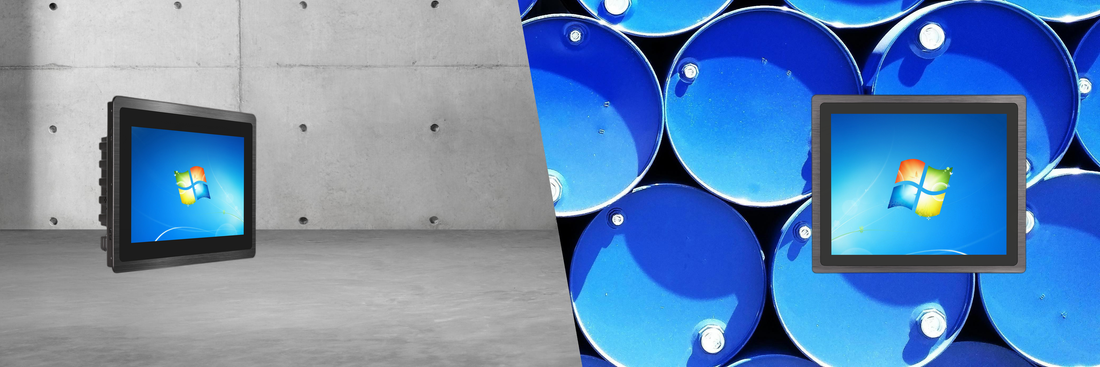
Redefining Rugged Computing: Understanding Mil-Spec Standards for Extreme Environments
Redefining Rugged Computing: Understanding Mil-Spec Standards for Extreme Environments
In today’s world, rugged computers are essential across a range of industries, from defense and aerospace to oil and gas, mining, and transportation. These environments demand technology that can withstand extreme conditions without compromising performance. The term “Mil-Spec” often comes up when discussing rugged computers, but what does it really mean? More importantly, how can it ensure your technology will survive the harshest operational environments? This article delves deeply into what constitutes a Mil-Spec computer and why this specification is crucial for both military and industrial applications.
What Is Mil-Spec and Why Is It Critical for Computers?
Mil-Spec, short for Military Specification, is a set of standards used by the U.S. military to evaluate whether equipment is reliable and durable enough for deployment in extreme environments. These standards are rigorously enforced to ensure that products used by the armed forces can perform under the stress of battle. However, this reliability and durability are also desirable in civilian sectors, particularly in industries requiring robust, long-lasting equipment.
While Mil-Spec originated from military needs, its applications extend to various industries where ruggedization and performance are essential. A significant aspect of Mil-Spec compliance is the equipment’s design and manufacturing process. The U.S. government often owns the design specifications, which are passed on to manufacturers to produce equipment for the Department of Defense (DoD) and its contractors. Strict quality control ensures that manufacturers meet these specifications.
When a device is described as Mil-Spec compliant, it typically means that the equipment has met the stringent guidelines laid out in specific military standards, such as MIL-STD-810G or MIL-STD-461. These standards measure how well a device can endure extreme physical and environmental conditions like vibration, shock, extreme temperatures, dust, and water ingress, among others.
Key Terminologies Related to Mil-Spec:
- MIL-STD (Military Standard): These are detailed technical standards to ensure military equipment performs reliably in specific scenarios.
- MIL-DTL (Detail Specification): This refers to the detailed specifications necessary for individual components.
- MIL-PRF (Performance Specification): This standard defines the performance parameters that the equipment must meet.
- MIL-SPEC (Defense Specification): A specification outlining the necessary qualities of materials, processes, and engineering practices.
Each of these terminologies plays a vital role in the certification process, ensuring that military and industrial-grade equipment can survive under extreme conditions.
The MIL-STD-810G: A Popular Standard for Rugged Computers
The MIL-STD-810G standard is one of the most common certifications for rugged computers, known for its comprehensive tests replicating real-world environmental challenges. It features a wide range of 29 test methods and 76 procedures, from altitude testing to extreme temperature fluctuations, sand, dust resistance, and salt fog exposure, as well as vibration and shock endurance.
MIL-STD-810G sets the benchmark for environmental engineering and laboratory testing, ensuring that the materials and design of devices can withstand the harshest environments. The letter "G" indicates the seventh version of this standard, incorporating incremental updates that reflect new testing methods and technologies. It focuses on simulating realistic environmental impacts, offering manufacturers the opportunity to test their devices under the most extreme conditions they could face throughout their lifecycle.
While compliance with MIL-STD-810G provides a reliable baseline for rugged devices, it is essential to remember that not all certifications are equal. Some manufacturers may claim compliance without conducting the full range of tests, potentially exposing users to product failures in critical situations.
Different Levels of Compliance
There are three primary interpretations of what compliance with MIL-STD-810G can mean, and it’s essential to understand these distinctions when purchasing rugged equipment:
- Design-Based Compliance Without Testing: Some manufacturers may base their products' architecture on MIL-STD guidelines without performing any real-world testing. Although these devices might theoretically meet the design criteria, they haven't been validated to ensure performance under extreme conditions. This can lead to catastrophic failures if the device is deployed in a rugged environment without proper verification.
- Lab-Tested Compliance: Other manufacturers may design and test their equipment in third-party or in-house labs. This is a step forward, as it involves controlled testing of the device's resilience under different stress factors, offering some assurance of quality and durability.
- Accredited Lab Testing or DoD-Inspected Testing: The most rigorous form of compliance involves testing in an accredited lab, or under the supervision of DoD inspectors. This is the level of testing required for equipment used by the U.S. military, and it ensures that the device is built to survive the rigors of real-world deployment in the most extreme conditions.
The second and third levels of compliance are generally the most reliable, providing the highest confidence that the equipment will meet operational requirements in the field. For industries that need durable computers but don’t require military-grade certifications, the second level of compliance is often sufficient.
The Benefits of MIL-STD Compliance for Industrial and Edge Computing
Mil-Spec computers are not just for military use. Embedded computers and edge computers are integral in industries such as energy, transportation, and manufacturing, where rugged systems are required to operate reliably under extreme environmental stress. When these devices meet the MIL-STD-810G standard, they guarantee a high level of resilience against environmental challenges such as:
- Temperature extremes: Many industries operate in locations where temperature fluctuations are severe, from the freezing cold of high altitudes to the sweltering heat of desert climates.
- Shock and vibration: Whether mounted in a vehicle or placed in an industrial setting, these computers must withstand constant movement, shocks, and vibrations without failure.
- Ingress protection: Dust and water resistance are crucial, especially in outdoor deployments or in environments with high particulate matter or moisture.
For example, edge computers deployed in vehicles, including autonomous cars, need to be reliable under constant movement and varying environmental conditions. MIL-STD testing ensures these computers can handle shocks and vibrations without downtime, which could have life-or-death consequences in autonomous systems.
Key Design Considerations for MIL-STD-810G Compliance
When choosing a rugged industrial PC that complies with MIL-STD-810G, several critical design elements must be evaluated:
- Fanless Design: A fanless computer avoids the pitfalls associated with moving parts. By using passive cooling, the system eliminates fan failure points and noise, while also providing better ingress protection from dust and moisture.
- Cable-Less Internal Design: Cables inside a computer are vulnerable to damage from shock, vibration, and wear. By opting for a cable-less design, you reduce the risk of signal degradation and improve the overall reliability and cleanliness of the system.
- One-Piece Chassis: A one-piece chassis adds structural integrity, eliminating weak points that can emerge from screws and joints. This increases the system's ability to endure impacts and vibrations without failure.
- Industrial-Grade Components: Every part of a MIL-STD-810G compliant computer should be designed with industrial-grade components. This means using high-quality materials such as durable capacitors, resistors, and power chokes, which further extend the system’s life and reliability in extreme conditions.
Why Choose MIL-STD-810G Compliant Systems?
Rugged industrial PCs that meet MIL-STD-810G standards are ideal for organizations that operate in extreme environments. These computers offer a level of durability and reliability that standard systems cannot, ensuring that critical applications continue running smoothly even in the harshest conditions.
By investing in a system that meets these stringent military-grade standards, businesses can reduce downtime, enhance safety, and ensure long-term operational efficiency, regardless of where they are deployed.
Explore the Most Advanced Rugged Computing Solutions
For industries and organizations requiring the most reliable and durable computing solutions, leveraging rugged computers with MIL-STD-810G compliance is essential. To learn more about how rugged computing technology can enhance your operations, contact us today at support@IMDTouch.com or visit our website at IMDTouch.com. We specialize in providing high-quality, durable computers built to withstand the most demanding environments. Whether you need edge computing solutions for autonomous vehicles or embedded systems for industrial use, our products are designed to ensure exceptional performance and longevity.
